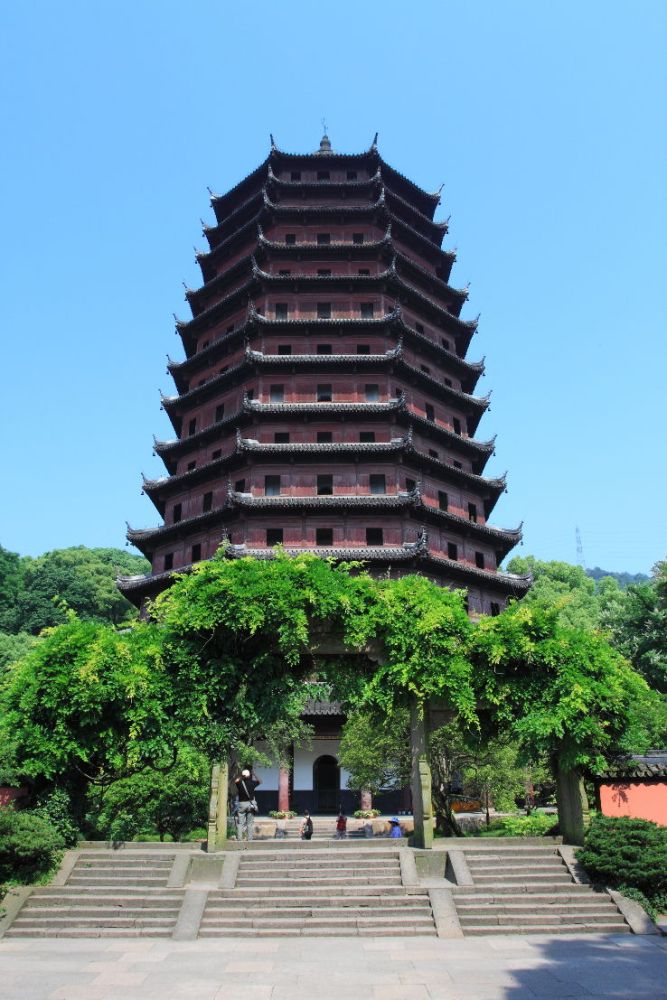

The Liuhe Pagoda, which translates to "Six Harmonies Pagoda," is a renowned cultural and historical landmark located in Hangzhou, Zhejiang Province, China. Its history as a tourism attraction is as multifaceted as the structure itself.
Constructed in the year AD 970 during the Northern Song Dynasty, the Liuhe Pagoda was initially built to calm the tidal waters of the Qiantang River and as a navigational aid for ships and boats. However, the pagoda was destroyed during warfare in the year 1121 and subsequently reconstructed during the Southern Song Dynasty. With its impressive structure and the panoramic views it offers of the Qiantag River, it gradually became a point of interest for visitors.
Standing at an impressive height of about 59.89 meters, the octagonal-shaped tower with its thirteen stories (which appear as seven due to the structure's design) has attracted visitors for centuries. Its exquisite carvings and paintings showcase the splendor of ancient Chinese architecture, making it a subject of study and admiration for history enthusiasts, architects, and tourists alike.
Liuhe Pagoda's prominence as a tourist destination began to take shape in the Qing Dynasty when it was often visited by literati and poets who found inspiration in its beauty and the surrounding scenery. Over time, it became more accessible to the general public, and its fame as a historical monument grew.
In the 20th and 21st centuries, the pagoda has undergone several renovations to ensure its preservation and safety for visitors. Today, it is part of the Yuelun Mountain Scenic Area and is complemented by a lush park and an exhibition hall that showcases the cultural significance of the region's ancient pagodas. The site's inclusion as part of the West Lake scenic area, which is a UNESCO World Heritage Site, has increased international interest and recognition.
With the advent of social media and globalization, Liuhe Pagoda has become a bucket-list destination for many travelers. Its history, combined with the stunning natural beauty around it, attracts a diverse range of visitors, from history buffs to hikers, from poets to photographers. The most recent trend is an increase in immersive and interactive experiences, such as night tours and augmented reality applications, which bring its history to life for tech-savvy tourists.